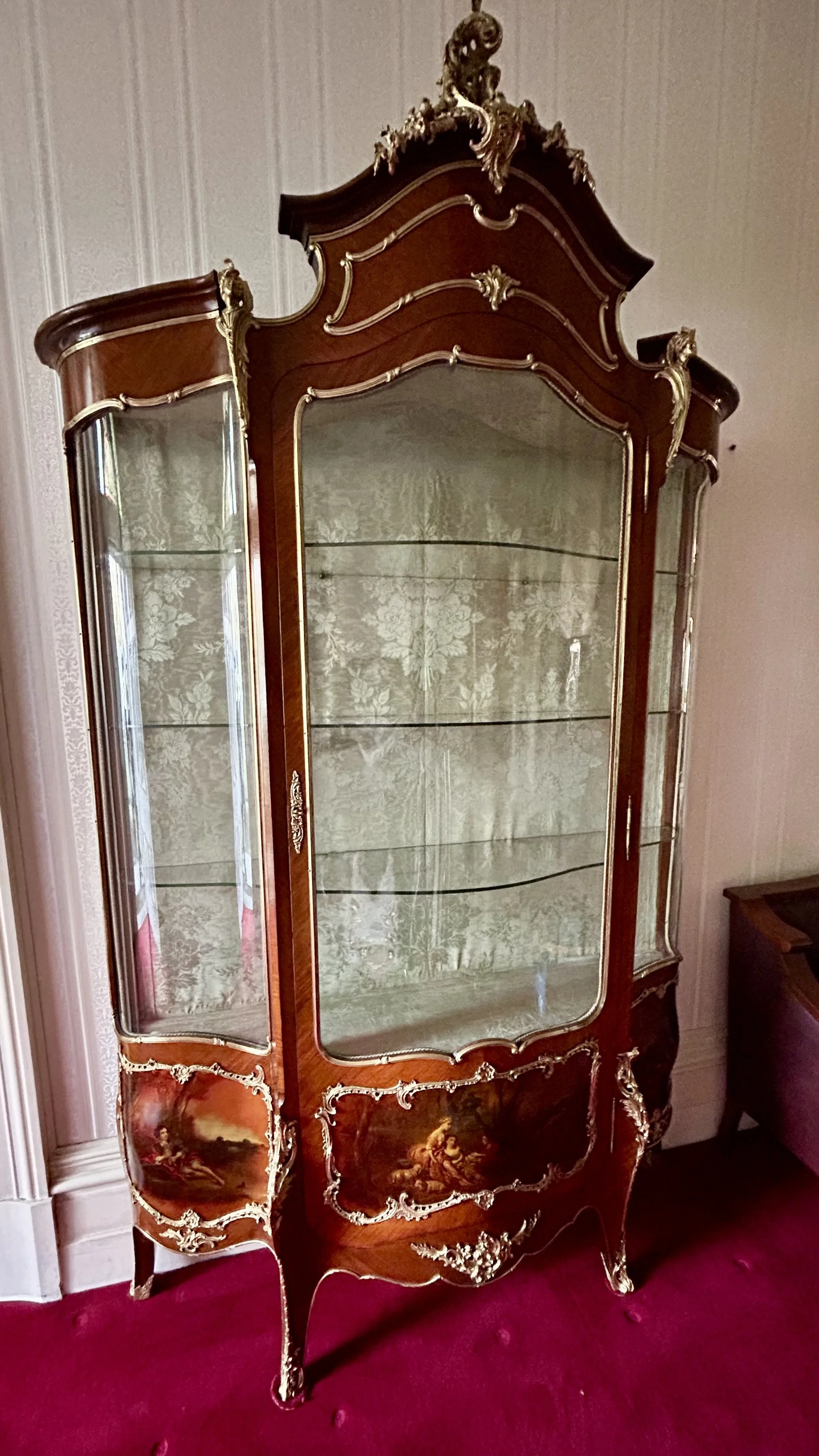Restoration of Antique Vitrine Display Cabinet
This exquisite antique vitrine, featuring curved glass panels and ornate ormolu detailing, underwent careful restoration to preserve its elegance and craftsmanship.
The process included:
Re-gluing sections of loose veneer to ensure structural integrity and restore the original contours of the cabinet.
Touching up areas of missing or damaged veneer using traditional shellac methods, carefully matched to blend with the existing finish.
Finishing with a hand-applied wax and thorough buffing, enhancing the natural sheen of the timber and giving the piece a warm, glowing finish.
The result is a beautifully restored display cabinet that retains its historic charm while being structurally sound and visually stunning.
A Brief History of the Vitrine
A vitrine is a glass display cabinet, often ornately decorated, designed to showcase fine objects such as porcelain, crystal, silverware, or collectibles. The name comes from the French word vitre, meaning “glass.” Vitrines became particularly popular in the 18th and 19th centuries, especially in France during the Louis XV and Louis XVI periods.
These cabinets were typically placed in drawing rooms or salons of affluent homes and were designed not just for storage, but as a statement piece, demonstrating both taste and wealth. High-end examples feature fine marquetry, gilt bronze (ormolu) mounts, and curved bevelled glass panels, like the one you’ve restored.
In the Victorian and Edwardian eras, vitrines also became fashionable in England and other parts of Europe, with styles influenced by Rococo Revival, Neoclassical, and Art Nouveau movements.
Today, antique vitrines are prized for their craftsmanship, elegance, and ability to blend with both traditional and eclectic interiors. They remain a timeless way to showcase beautiful or sentimental objects.
